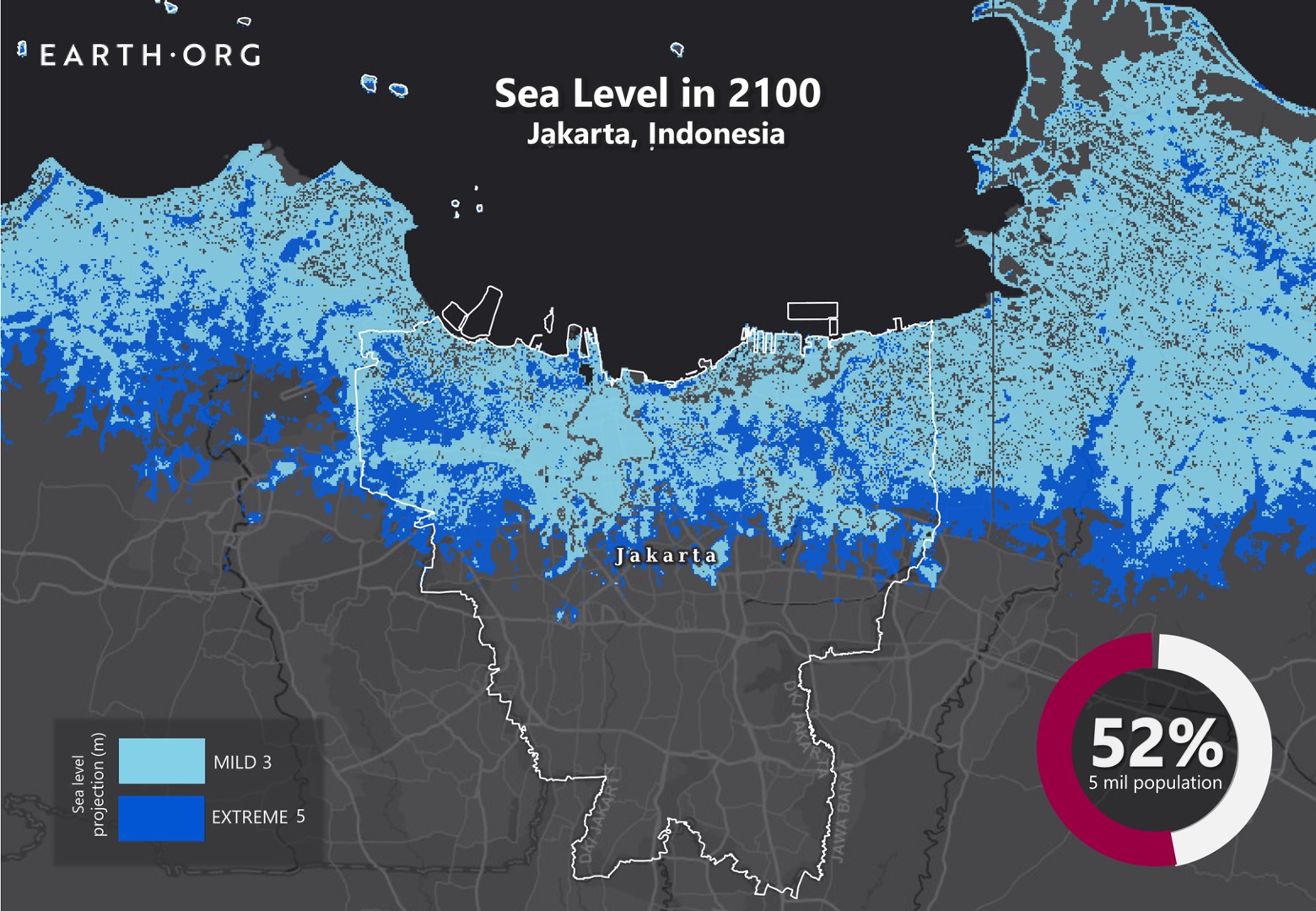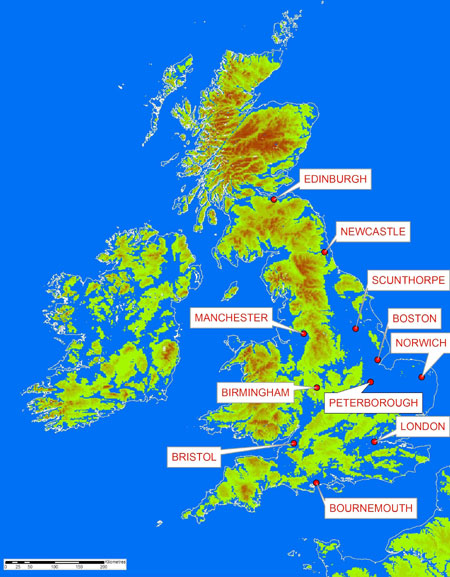

To accomplish this, we developed a GIS raster analysis framework. Potentially inundated areas were computed based on elevation and proximity to the current ocean shoreline. National Park Service and is available at. Natural Earth was developed by Tom Patterson of the U. Inundation zones were displayed on Natural Earth, a global shaded relief map with land cover tints, for all static maps and the map animations. LandScan may also be displayed under the inundation zone layers in the map animations. The most recent version of LandScan (2004) was used for all population calculations in the inundation zones. LandScan was compiled from the best available population census data for each country that were then disaggregated into cells based on land cover type, proximity to roads, slope, and nighttime lights. Populations in the inundation zones were estimated from LandScan, a global population dataset developed by the Oak Ridge National Laboratory Global Population Project for estimating populations at risk (Dobson et al. Inundation zones for the entire globe in the world map animation were calculated from the ETOPO2 raster elevation dataset developed by the National Geophysical Data Center (NGDC) (NGDC 2001), which has a coarser resolution of two minutes of latitude and longitude (approximately 1.8 km at the Equator).

Inundation zones depicted on all static map products and the regional maps in the map animations were derived from GLOBE. Cells in GLOBE have a spatial resolution of 30 arc seconds of latitude and longitude (approximately one kilometer at the Equator), with each land cell in the grid assigned an elevation value (meters) in whole number increments.

Sea level rise or inundation zones were calculated from the Global Land One-km Base Elevation (GLOBE) digital elevation model (DEM) (Hastings and Dunbar 1998), a raster elevation dataset covering the entire world. Rapid sea level rise will be just one of the several catastrophic consequences of global warming, if climate change is not properly tackled within the timescale of the Paris Climate Agreement.The goal of this research was to simulate a theoretical global sea level rise of one to six meters with Geographic Information Systems (GIS), and to develop multiple products for visualizing the inundation and its effects, including static maps, map animations, and layers viewable in Google Earth. In such circumstances, residents would be forced to flee their homes and move further inland while the loss of businesses could be a devastating hit to the local economy. However, according to the UK's Environmental Agency National Coastal Erosion Risk Map, approximately 1,800 kilometres (km) of open coast is eroding due to global warming and will cause risk to human life and the environment. Therefore, scientific institutions rely on structured expert judgements.Ī research article led by Professor Jonathan L Bamber at the School of Geographical Sciences at the University of Bristol, said: "Despite considerable advances in process understanding and observational record of ice sheet contributions to global mean sea-level rise, severe limitations remain in the predictive capability of ice sheet models." Scientists have long worked to predict how quickly global warming could raise the level of the world's oceans against the ever-changing nature of climate change. READ MORE: Cosy igloos are coming to Bristol Christmas Market The impacts of climate change has caused sea levels to rise, which has increased the risk of flooding and severe coastal erosion around the shores of the UK, including the West of England. Hundreds of homes and businesses across the South West could be at risk of sinking from 2030 onwards, due to the rising sea levels and land erosion across UK coastlines, several reports have predicted.Īn interactive study has forecast the likely impact of rising sea levels and estimated which areas of the world could be below the current water level by 2050.


 0 kommentar(er)
0 kommentar(er)
